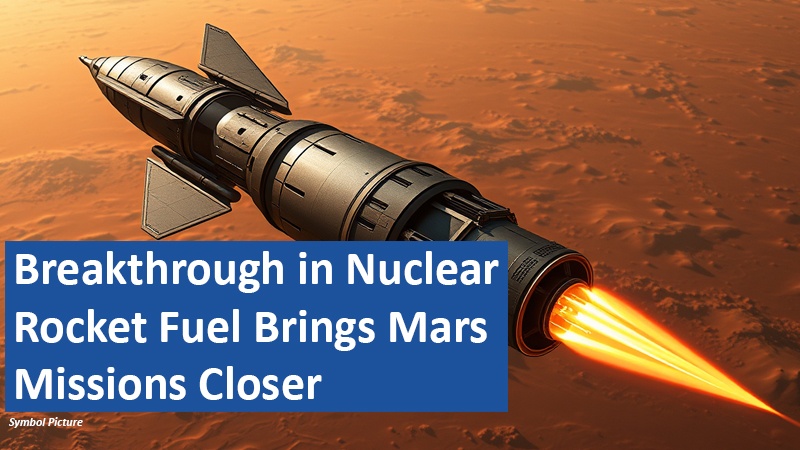NASA and its partners have successfully tested a nuclear thermal propulsion (NTP) fuel that could revolutionize deep-space travel. This breakthrough brings the dream of reaching Mars in just 45 days—instead of the traditional seven-month journey—one step closer to reality. The test confirms that nuclear-powered engines could withstand extreme conditions and operate safely in space.
By Sadie Watkins
How Nuclear Thermal Propulsion Works

Unlike conventional chemical rockets, nuclear thermal propulsion (NTP) systems use a reactor to heat liquid propellant, such as hydrogen, to extreme temperatures. The heated propellant is then expelled through a nozzle, creating thrust. This method is up to three times more efficient than traditional chemical propulsion, making it a game-changer for long-duration space missions.
The latest tests, conducted by General Atomics (GA) at NASA’s Marshall Space Flight Center (MSFC), demonstrated that the fuel could endure temperatures of 4,220.6 degrees Fahrenheit without damage. The reactor sustained six heat cycles, each simulating 20 minutes of full-power operation, mimicking the harsh conditions of deep-space propulsion.
Fuel Designed to Withstand Extreme Conditions
The success of these high-temperature endurance tests proves that the fuel can handle the intense conditions required for nuclear-powered spaceflight. According to researchers, this milestone marks a crucial step toward the realization of safe and reliable NTP systems for lunar and interplanetary missions.
Nuclear propulsion’s advantages extend beyond speed. By reducing the time astronauts spend exposed to space radiation, shorter Mars missions could significantly lower health risks, such as organ damage from prolonged cosmic radiation exposure. This makes NTP technology a critical factor in planning future crewed deep-space missions.
What’s Next for Nuclear-Powered Space Travel?
Following these successful tests, General Atomics and NASA will continue refining the technology to meet the demands of future cis-lunar and Mars exploration missions. If development progresses as planned, the first operational nuclear-powered spacecraft could launch within the next decade.
The successful testing of nuclear thermal propulsion fuel represents a major step toward faster and more efficient space travel. By significantly reducing the time needed for a Mars mission, this technology could improve astronaut safety and enable more ambitious deep-space exploration. Continued development and testing will determine when nuclear-powered spacecraft become a reality for future interplanetary missions.
Based on content from www.forschung-und-wissen.de and own research.